We are six decades into the information age, and data has undeniably become a competitive currency in business. Despite this, studies estimate that over 80% of a company’s data remains unstructured, trapped in text-based reports, contracts, memos, agreements, emails, and more. Manually collating this information requires skilled personnel to spend valuable time searching and preparing the data for analysis before any meaningful insights can be derived. This approach leads to the underutilization of a company’s most critical and costly resource – its human talent.
What is Intelligent Document Processing?
Intelligent Document Processing (IDP) is a technology that automates the extraction, processing, and analysis of critical data from documents. By transforming slow, manual document workflows into efficient digital processes, IDP significantly boosts productivity and accuracy. This technology eliminates the need for manual data entry, reducing errors and accelerating document handling.
How Does Intelligent Document Processing Work?
IDP captures documents, then ingests, processes, and classifies data using AI technologies like NLP, ML, and deep learning. With human-in-the-loop support when needed, data is validated and intelligently embedded into systems or utilized in downstream processes.

Data Capture
The first step in intelligent document processing involves collecting data from various sources. This data is consumed through a process known as “data capture.” As soon as a document is fed into the IDP system, pre-processing begins. Key techniques employed in this phase include binarization, deskewing, and noise removal to enhance document quality.
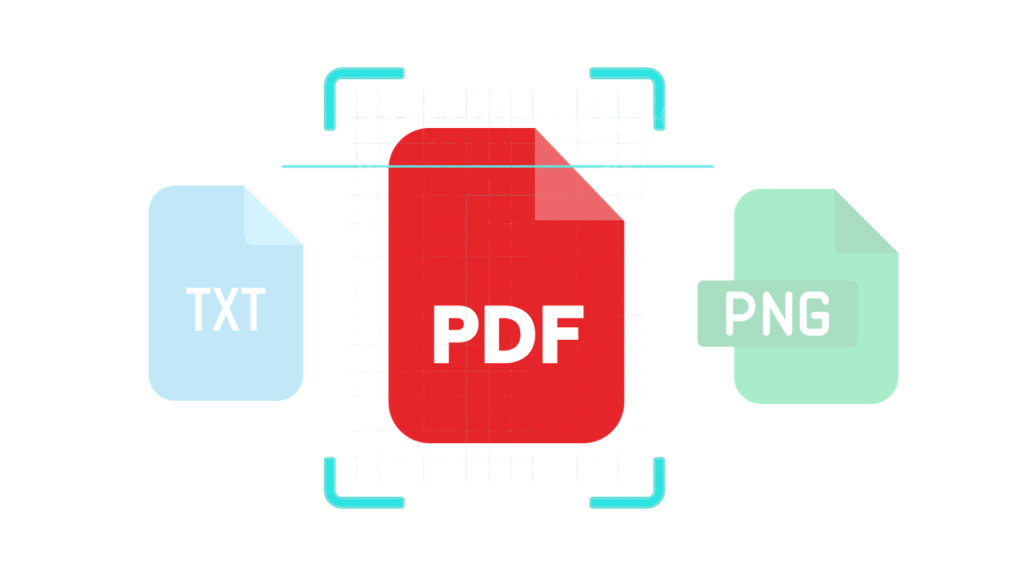
Classification
Document classification is the next step, where the beginning and end of the source material are identified before any content analysis. This process involves categorizing documents into types such as invoices, purchase orders, identity documents, contracts, bills, and insurance claims and more. For PDF documents or scanned images, IDP workflows use OCR technology to extract characters, numbers, and symbols from the data.
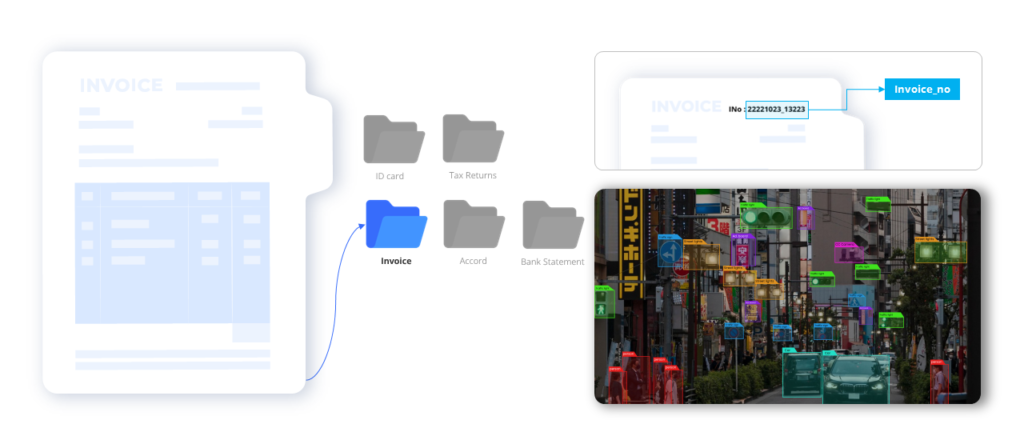
Data Extraction
After classification and source format analysis, data extraction is the most crucial stage. IDP utilizes AI models trained in deep learning (DL), machine learning (ML), and natural language processing (NLP) to extract valuable context from the source. The extraction process focuses on specific data points such as addresses, tax information, monetary values, and product specifications. The extracted data is then entered into a database or stored for later use, flowing into various business applications like spreadsheets, accounting software, ERP, ECM, and CRM systems.
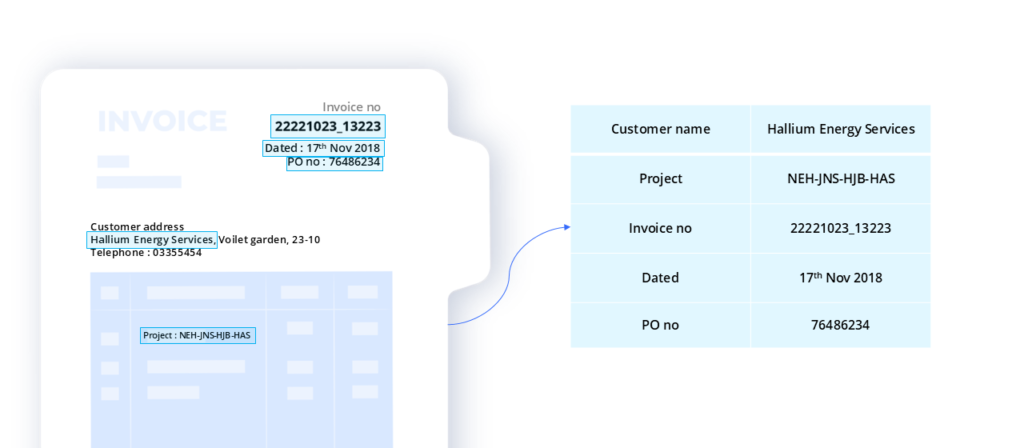
Data Validation
The IDP system validates the extracted data against various business rules, comparisons, and structured/unstructured data. For example, it might compare addresses from utility bills and bank records with those on application forms, or verify invoice totals by cross-referencing with related purchase orders. Validated data is sent to third-party applications for further processing, while any data that fails validation is flagged for correction.
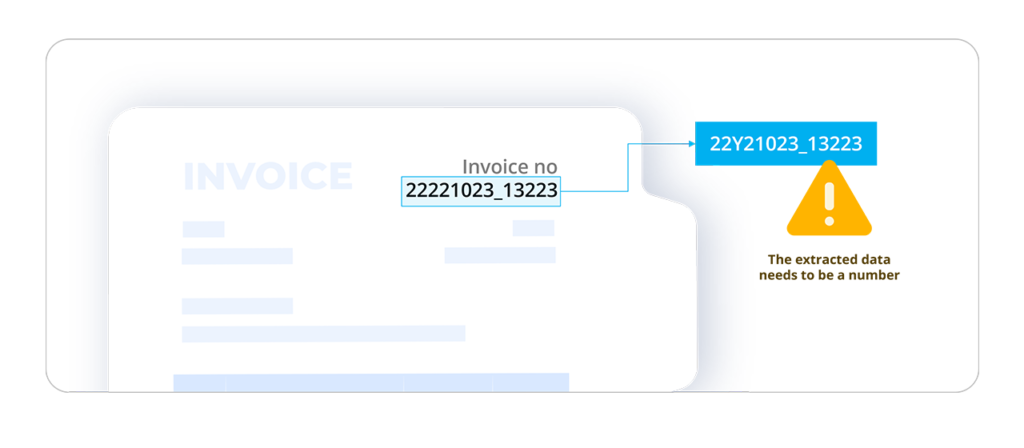
Data Analysis
Data analysis in Intelligent Document Processing (IDP) helps improve how documents are managed and processed. It tracks errors to identify and fix problems, measures processing times to find delays, and standardizes data for consistency. By spotting patterns and issues early, it allows for quick adjustments. Comparing current performance to past data helps set goals and enhance efficiency.

IDP Workflow Integration and Human Review
A human-in-the-loop review enhances data accuracy, benefiting the model’s supervised learning process and increasing reliability. The final step in intelligent document processing involves exporting the processed information to internal data systems and integrating it with other business workflows.
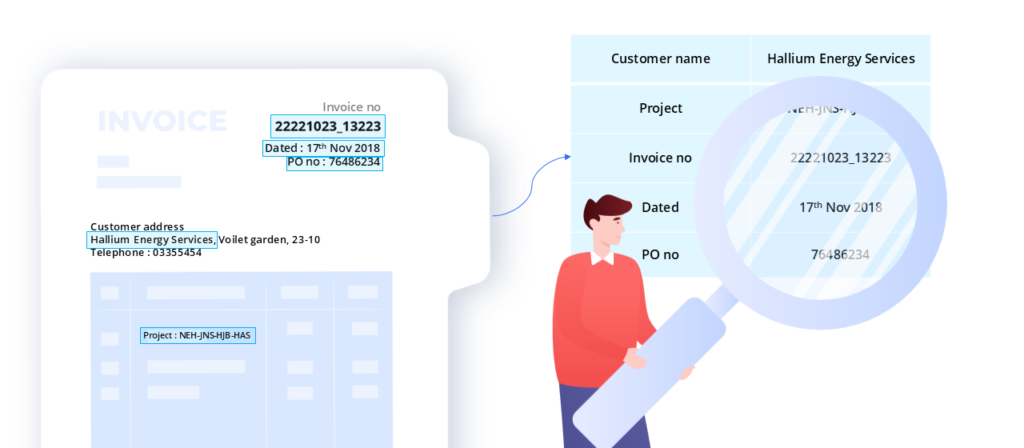
Technologies Driving Intelligent Document Processing (IDP)

The success of Intelligent Document Processing (IDP) comes from using advanced technologies that work together to automate and improve document handling. These technologies form the foundation of IDP systems, helping businesses manage large amounts of data quickly and efficiently.
1.Optical Character Recognition (OCR)
OCR converts scanned documents, PDFs, or images into editable text. For example, it can turn a scanned invoice into digital text that can be easily edited and searched. Modern OCR can handle various fonts and layouts and improves over time using machine learning.
2. Machine Learning and Artificial Intelligence
Machine Learning (ML) and Artificial Intelligence (AI) help IDP systems learn from data and improve. For instance, ML can recognize patterns in historical invoices to predict future data entries, while AI can automatically extract and categorize details from different types of documents, like contracts, even if their formats vary.
3. Natural Language Processing (NLP)
NLP enables computers to understand and process human language. In IDP, it can extract key information from text, such as identifying important dates and names in a contract. NLP can also summarize lengthy documents or translate text, making it easier to handle various document types.
4. Robotic Process Automation (RPA)
Robotic Process Automation Services streamline repetitive tasks such as data entry and document routing, improving efficiency and accuracy. For example, an RPA bot can automatically send a processed invoice to the finance department for approval after IDP has extracted and validated the data. This reduces manual work and speeds up processing. An effective RPA strategy builds on this by making sure that automation works smoothly with document processing. This helps simplify operations, cut down on manual work, speed up approval times, and reduce errors, leading to better overall efficiency and productivity.
Business Benefits of Intelligent Document Processing

Intelligent Document Processing (IDP) brings substantial benefits to business operations by boosting efficiency, enhancing accuracy, and driving overall productivity.
1. Achieve Up to 99% Data Extraction Accuracy
Intelligent document processing (IDP) software achieves more than 99% accuracy in data extraction by eliminating data entry errors. Regardless of the document volume, the same high-quality output is maintained throughout the process, which operates 24/7, freeing human resources from data preparation tasks. Advanced IDP solutions can even flag potential data entry errors, ensuring highly accurate document processing.
2. Reduce Operational Costs by 60-70%
IDP workflows significantly reduce operational costs by eliminating duplicate entries and minimizing the need for human intervention. AI-driven models and APIs can be trained to send automated alerts in cases of duplicate entries or fraudulent payments.
3. Enhance Efficiency by 10X through System Integration
Automated document processing quickly ingests, categorizes, and classifies data without manual input. The IDP system handles unstructured, semi-structured, and structured documents in various formats at scale. By integrating with third-party software, data seamlessly flows between systems, eliminating the need for manual data entry. Once processed, the data is sent to downstream applications for further automation, significantly boosting efficiency.
4. Reduce Processing Time to 30 Seconds
IDP software serves as a single source of truth, capable of extracting and processing data within 30-60 seconds. This rapid processing saves organizations time and resources on data input, making data more accessible and enabling the establishment of a highly efficient digital workforce. With information stored in the cloud, IDP improves cross-departmental collaboration and spares employees from the tedious task of manually collecting, organizing, and cleaning data for further processing.
IDP Use-Cases Across Industries

IDP can be used in various industries, but certain areas can particularly benefit from its ability to process and manage large volumes of data accurately and efficiently.
- Banking and Financial Services
IDP helps banks automate the verification of cheque signatures, speeding up the process and reducing manual effort. It also streamlines the management of account opening forms, maintenance forms, mortgage applications, KYC, and tax forms through efficient digitization and organization.
- Insurance
IDP simplifies the handling of claims forms by automating the verification process against policy documents and supporting materials like invoices and receipts. It efficiently processes various insurance documents, including life insurance applications, auto accident claims, and disability forms, reducing manual work and speeding up claims processing.
- Healthcare
IDP improves efficiency in healthcare by digitizing and automating the processing of patient intake forms, enrolment documents, and health insurance claim forms. This reduces administrative overhead, speeds up data processing, and allows healthcare providers to focus more on patient care.
- Government
IDP aids government organizations by automating the processing of paper-based documents such as employment applications, tax forms, and social security documentation. This helps manage and archive documents more efficiently, easing the transition to digital processes.
Summing Up
Drive Intelligent Document Processing (IDP) success with AppsTek Corp. Our expert consultants, powered by industry-leading tools like UiPath AI Center and Power Automate, identify high-impact use cases, develop strategies, and ensure seamless integration. We offer comprehensive support, including user training and ongoing maintenance, to supercharge RPA initiatives and enhance processing efficiency and accuracy. Contact us today to learn more.
If you’re looking to dive deep into this technology, watch our webinar, Skip the Paper Trail: Leveraging AI and RPA for Intelligent Document Processing, now available on-demand.
Simplify Document Processing with IDP




